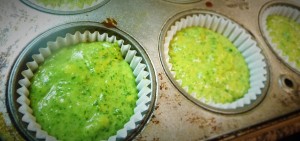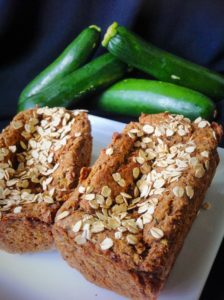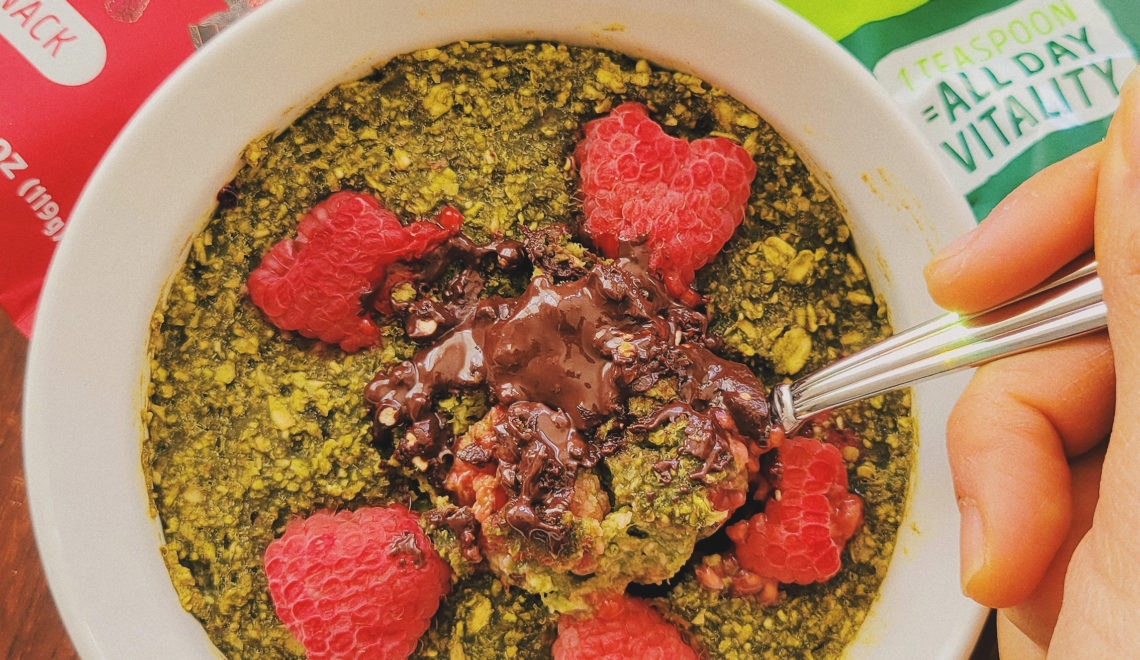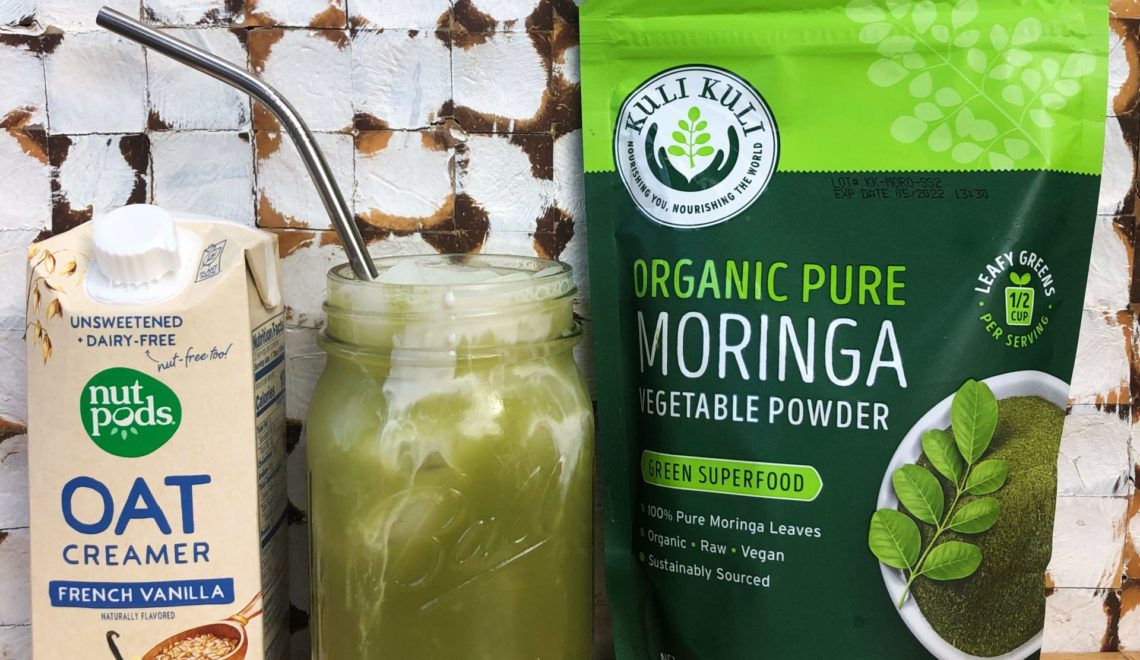As a personal chef with an eye on nutrition, I am always looking for ways to make recipes that are healthy and satisfying. My name is Katie Simmons and I’m a professional chef based in Chicago. Many of my clients love the convenience and satisfaction of baked goods, especially muffins and bread. It’s so much easier to pack a Banana Walnut muffin for their commute to work, rather than trying to eat a spinach salad.
And when it comes to kids, they are often more likely to gobble up a Green “Boo-Berry” Goblin pancake than to dive into a bowl of kale. This is one of the reasons I was so excited to come across the moringa powder. One little packet (10g) packs 3 g of fiber and 3 g of protein! Plus, there’s Vitamin A, calcium, and Iron–all essential for a healthy diet. It’s like a multivitamin in a leaf.
Super-Green Your Baking: 4 Tips for Using Moringa Powder
Essentially, what I love most about moringa is that I can “amp-up” the nutrition in my breads and muffins by simply adding it to any recipe. I’ve been using this super-green powder in my baking for a few months now. Here are a few tricks I’ve learned, for successful with Moringa powder baking.
1. Remember the color – It’s GREEN!
I’ve made muffins for kids who loved this green color, while I’ve seen adults scowl at it. You have two options here: embrace the color or hide it. If you’re embracing it, flavor your muffins with mint extract for a “Super-Minty” muffin. If you’re hiding it, use the powder in chocolatey recipes like brownies or chocolate muffins.
I love the color, and how I don’t have to add artificial dyes to my recipes in order for a visual delight.

Green Muffins that Kids Love
2. Start with a little moringa
Start by substituting just 2 tbsp. of your flour with the Moringa powder. Make sure you like the taste and the texture holds up before adding more. For an entire recipe, say 12 muffins, with 2 tablespoons of moringa powder, each muffin is getting between 1/2 teaspoon – 1/3 teaspoon of moringa. That’s a great moringa serving size for kids.
They’ll get a good dose of “sneaky greens” while not being turned away from a “veggie” taste. Although if your kids love the taste of veggies, then half your work is already done! If that’s making you wonder How Often You Should Eat Moringa, Kuli Kuli offers a comprehensive article on that too.
3. Follow the Fourth
A general rule of thumb when substituting flour is to only swap out ¼ of the mix. For example, for a recipe that calls for 1 cup of wheat flour, you can use up to ¼ cup of Moringa powder + ¾ cup wheat flour. If you add more than this, the batter probably won’t get has much rise and have the texture you want. Hence the saying “follow the fourth.”

Pro tip: sift your dry ingredients first
4. Sift with the dry ingredients
Add the moringa powder to your dry ingredient mix and sift everything together. It’s important to do this before integrating any wet ingredients, like eggs or butter.
This sifting will help ensure the powder is evenly mixed in the batter, and also help you avoid any clumping of moringa.
Bonus: Need Recipe Ideas?
Now it’s time to roll up your sleeves and get baking! Here are four quick ideas to get you inspired:
For cookies, add mint extract and mini chocolate chips for “Mint Chocolate Chip Cookies.” In pancakes, add to your pancake mix with blueberries for Green Goblin “Boo-Berry” Pancakes.
In bread, add moringa to zucchini bread to amp-up the green color. In brownies, sneak into chocolate brownies. No one will know they’re getting in their daily greens while enjoying your delicious treat. If you want more ideas on how to make kid-approved moringa recipes, check out our article with 10 Ways to “Moringafy” Recipes for Children, or explore the moringa recipes that Kuli Kuli offers.
We’d love to hear about your moringa baking adventures in the comments below!
Follow us @kulikulifoods so we can see some of your favorite ways to add this energizing superfood to your baking routine.
About the Author:
Katie Simmons is a Personal Chef based in Chicago. She specializes in creating delicious, healthy recipes for those with special dietary concerns like gluten-free, oil-free, plant-based, and low-residue. Outside of the kitchen, she is a Fitness Instructor for Equinox, with over 13 years experience in the fitness industry.
For fun, Katie loves to travel, with her most recent travel involving 10 days of hiking in the Patagonia of Argentina and Chile. You can learn more about her and her recipes at: www.plants-rule.com













hello Katie
if the muffin or cookie ends up with a bitter aftertaste, does it mean the portion of moringa powder is too much to the overall flour ratio? any chance you have a gluten free moringa recipe I could use?
also, i heard the seed is equally nutritious, is there a difference if I substitute the seed into the flour instead of the leaf powder? I had experiment the seed, grated into my fried rice (about 2 seeds) and it has a bitter aftertaste. Luckily, I added some anchovies to sweeten the rice.
thank you
Hi Desmond —
Yes, the bitterness is from the Moringa — you can cut back on the amount you use, or add more sugar/fat to counter the bitter flavor. For gluten-free, I’d recommend swapping out the flour in the recipe for your favorite gluten-free baking blend.
I don’t have much experience working with the seed. It sounds like the shell/husk might have a bitter flavor. Good move to add some sweetness/fattiness with the anchovies to counter. Thanks for your questions!
Hi
I want to do my project on moringa leaf give me new idea for making new products from moringa.
Thanks for the blog about super green baking 4 tips using moringa powder, for more details visit: https://www.terryexports.com/
Thanks for the informative blog about super green baking 4 tips using moringa powder, for more details visit: https://www.terryexports.com/
Thanks for the blog about super green baking 4 tips using moringa powder, for more details visit: https://www.terryexports.com/
Thanks for the blog about super green baking 4 tips using moringa powder.